John Hurrell – 11 April, 2009
McWhannell's real interest here is the falling of light on flesh and fabric, and how he can orchestrate pools of glowing lumination. The trouble is that some of the poses are so tediously dull their banality distracts - it takes you away from this interest. The long legged sitters are so demurely ‘feminine' that their ordinariness, and the conventional frontal placement of the sofa, repels you.
Auckland
Richard McWhannell
Introducing Cowboy, Girls, Girls, Girls
17 March - 26 April 2009
In the world of painters, even globally, there are very few living portraitists of any substance. Of those who use identifiable sitters, one could name Lucien Freud; of subjects unidentifiable, Marlene Dumas; of those creating fabricated extrapolations, Jim Nutt.
This show at John Leech of twenty McWhannell works shows how difficult it is to create something memorable. Only one really stands out and that is a parody, a clever send up of Balthus’s Cathy Dressing, with the artist exposed in full glory with open bathrobe, cowboy boots, and hat. It has the same compositional awkwardness as the original, but the young woman whom McWhannell replaces with himself, is a pale sallow mediaeval beauty, flat and cardboardish, not a living solid person of the real world.
Balthus is interesting because his compositions surprise you. His organisation of shape, and his psychological peculiarities, hold your interest. However with McWhannell’s six self portraits and thirteen images of young women, the body language and poses are so conventional they could be based on photographs in any magazine. They don’t have the amusing toy-like quality that Hockney, say, achieved with his famous portrait of his parents, nor is there interest in the lyrical possibility of colour. Chromatic control is certainly present but nothing sweet or fruity. The palette is body or skin-based. Even the furniture and walls reflect aspects of skin.
McWhannell’s real interest here is the falling of light on flesh and fabric, and how he can orchestrate pools of glowing lumination. The trouble is that some of the poses are so tediously dull their banality distracts - it takes you away from this interest. The long legged sitters are so demurely ‘feminine’ that their ordinariness, and the conventional frontal placement of the sofa, repels you.
The best works of these ‘girls’ are when the artist concentrates on their faces, shoulders and chest. When they look beefy and ‘unglamorous’ - that’s when he arrives at something interesting, or when they seem to be day-dreaming, are totally indifferent to his presence, or are clearly irritable.
McWhannell’s self portraits with cowboy hats could be about the male insecurities of hair loss. In other self portraits that feature different shirts and jackets, and a repeated compositional template, the pleasures of theatricality become his subject matter, the delights of narcissistic reflection mixed with manual dexterity that can display itself.
Oddly there is a harsh acuity and rigidity in McWhannell’s work now that makes his earlier, softer, more scumbled paintings look so much better. They had a relaxed and blurry playfulness that led to unanticipated, dreamlike narratives. Perhaps that was a Fomison influence and he is now deliberately trying to move away from those qualities. These latest works - despite his quirky wardrobe - have a crushing lack of whimsy. McWhannell has formidable powers of observation which may be why he now likes the light to be so severe. Yet the content is so bourgeois: he has forgotten how to invent.
- John Hurrell
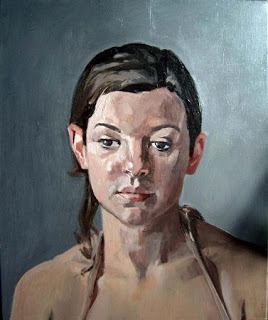
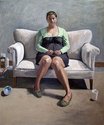
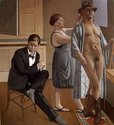
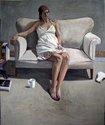
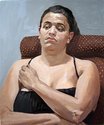

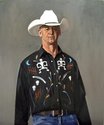
 Advertising in this column
Advertising in this column Two Rooms presents a program of residencies and projects
Two Rooms presents a program of residencies and projects



This Discussion has 0 comments.
Comment
Participate
Register to Participate.
Sign in
Sign in to an existing account.